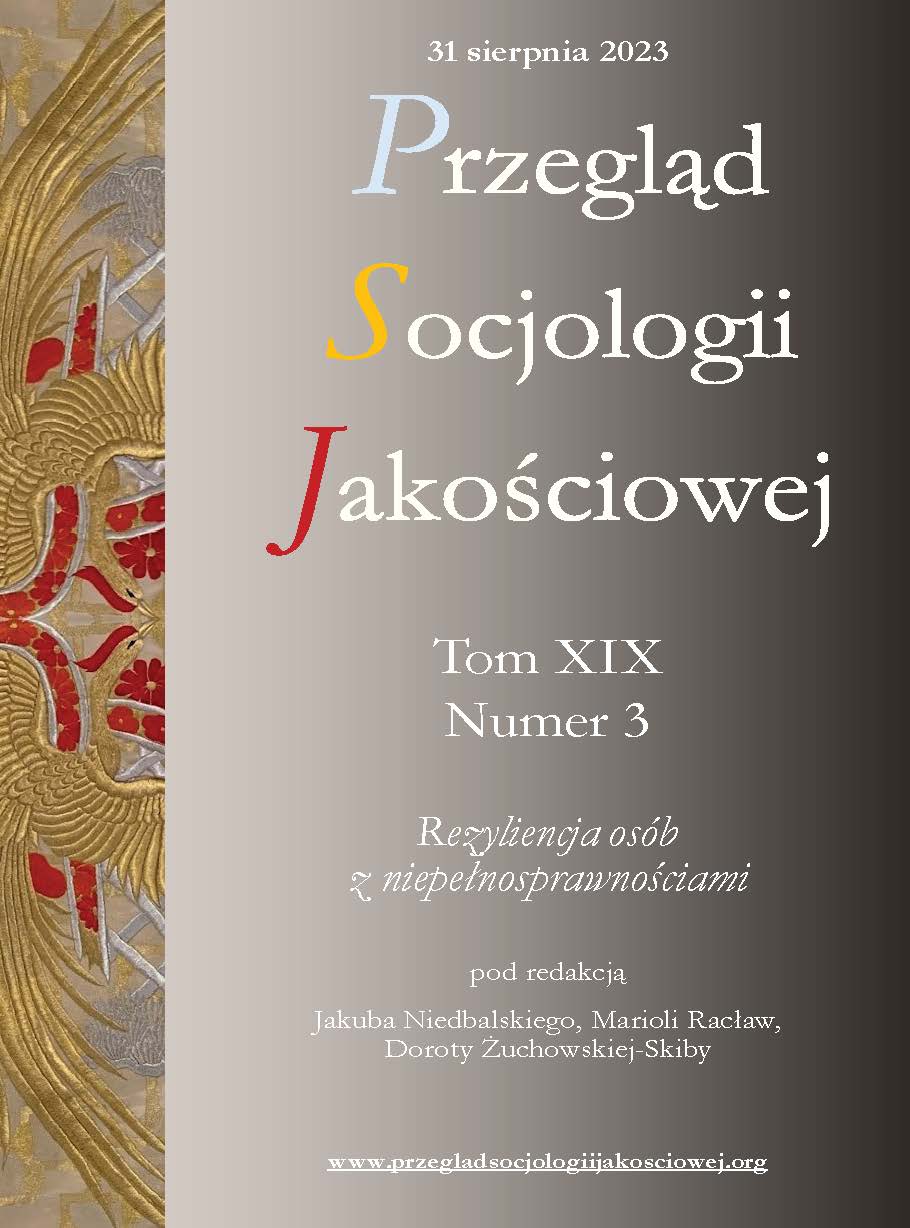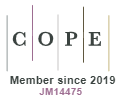Storytelling i uzdrawiająca moc fotografii: projekt My Space Rity Leistner
DOI:
https://doi.org/10.18778/1733-8069.19.3.11Słowa kluczowe:
Rita Leistner, fotografia, storytelling, opowieść wizualna, budowanie wspólnotyAbstrakt
Celem artykułu jest analiza artystyczno-społecznego projektu My Space. Stories from Inside the Downtown Eastside Vancouver kanadyjskiej fotografki Rity Leistner. Artystka poprzez swoje fotografie i wywiady przybliża codzienność grupy uzależnionych od narkotyków i alkoholu mieszkańców hoteli Astoria i Balmoral. Artykuł opiera się na fotografiach z projektu My Space oraz wypowiedziach jego uczestników. Mając na uwadze intencje twórczyni, autorzy artykułu przedstawili go w kontekście storytellingu, który potraktowali jako użyteczne narzędzie jakościowej analizy zjawisk społecznych. Podejście to sprawdza się przede wszystkim w badaniu zjawisk kultury i sztuki, a zwłaszcza różnego rodzaju wytworów artystycznych. W opracowaniu skupiono się na formie opowieści, która łączy w sobie wątki z wielu wymiarów indywidualnego i społecznego życia jednostki. Pokazano, jak fotografie przestrzeni, w której mieszkają bohaterowie opowieści, mogą stać się medium narracji łączącej teraźniejszość z przeszłością i przyszłością, a przede wszystkim służyć budowaniu społecznej wspólnoty.
Pobrania
Bibliografia
Abell Peter (2004), Narrative Explanation: An Alternative to Variable-Centered Explanation?, “Annual Review of Sociology”, vol. 30, pp. 287–310, https://doi.org/10.1146/annurev.soc.29.010202.100113
Google Scholar
DOI: https://doi.org/10.1146/annurev.soc.29.010202.100113
Bernstein Basil (1986), Kody i ich odmiany, kształcenie i proces reprodukcji kulturalnej, “Przegląd Socjologiczny”, vol. 34, no. 1, pp. 7–40.
Google Scholar
Britten L. (2022), Balmoral Hotel, the notorious, derelict Downtown Eastside SRO, is set for demolition, https://www.cbc.ca/news/canada/british-columbia/balmoral-hotel-the-notorious-derelict-downtown-eastside-sro-is-set-for-demolition-1.6353332 (accessed: 3.04.2023).
Google Scholar
Campbell Joseph (2008), The Hero with a thousand faces, New Jersey: Princeton University Press.
Google Scholar
City of Vancouver ( n.d.), Downtown Eastside, https://vancouver.ca/news-calendar/downtown-eastside.aspx (accessed: 5.04.2023).
Google Scholar
Curtis Ron (1994), Narrative Form and Normative Force: Baconian Story-Telling in Popular Science, “Social Studies of Science”, vol. 24(3), pp. 419–461, https://doi.org/10.1177/030631279402400301
Google Scholar
DOI: https://doi.org/10.1177/030631279402400301
Dennett Daniel C. (2014), Intuition Pumps and Other Tools for Thinking, New York: W.W. Norton & Co.
Google Scholar
Gelman Andrew, Basbøll Thomas (2014), When Do Stories Work? Evidence and Illustration in the Social Sciences, “Sociological Methods & Research”, vol. 43, no. 4, pp. 547–570, https://doi.org/10.1177/0049124114526377
Google Scholar
DOI: https://doi.org/10.1177/0049124114526377
Graesser Arthur C., Ottati Victor (1995), Why stories? Some evidence, questions, and challenges, [in:] Robert S. Wyer (ed.), Knowledge and memory: The real story, New York: Lawrence Erlbaum Associates, Inc., pp. 121–132.
Google Scholar
Green Melanie C. (2006), Narratives and cancer communication, “Journal of Communication”, vol. 56(1), pp. 163–183, https://doi.org/10.1111/j.1460-2466.2006.00288.x
Google Scholar
DOI: https://doi.org/10.1111/j.1460-2466.2006.00288.x
Jeziorski Ireneusz (2011), Wprowadzenie do antropologii i socjologii wizualnej, Bielsko-Biała: Akademia Techniczno-Humanistyczna.
Google Scholar
Kukiełko-Rogozińska Kalina (2021), Współczesna wojna na fotografiach Rity Leistner, Szczecin: Wydawnictwo Naukowe Uniwersytetu Szczecińskiego.
Google Scholar
Kukiełko-Rogozińska Kalina, Tomanek Krzysztof (2017), Obrazy emocji, emocje świata: fotografie wojenne Rity Leistner, “Kultura Współczesna”, vol. 2, pp. 14–26.
Google Scholar
Leistner Rita (2009), My Space. Stories from Inside the Downtown Eastside Vancouver, Camada, 2009, http://ritaleistner.com/wp-content/uploads/2016/01/myspace_byritaleistner.pdf (accessed: 5.04.2023).
Google Scholar
Leistner Rita (n.d.), About, http://ritaleistner.com/about-2/ (accessed: 5.04.2023).
Google Scholar
Liu Yipeng, Xing Yijun, Starik Mark (2012), Storytelling as Research Method: A West-Meets-East Perspective, “Research Methodology in Strategy and Management”, vol. 8, pp. 143–171, https://doi.org/10.1108/S1479-8387(2012)0000008008
Google Scholar
DOI: https://doi.org/10.1108/S1479-8387(2012)0000008008
Maier Christopher (2008), Creating Community Through Storytelling, https://storynet.org/creating-community-through-storytelling/ (accessed: 5.04.2023).
Google Scholar
McCall Becky, Shallcross Laura, Wilson Michael, Fuller Chris, Hayward Andrew (2021), Storytelling as a Research Tool Used to Explore Insights and as an Intervention in Public Health: A Systematic Narrative Review, “Internetional Journal of Public Health”, no. 66, 1604262, https://doi.org/10.3389/ijph.2021.1604262
Google Scholar
DOI: https://doi.org/10.3389/ijph.2021.1604262
Mitosek Zofia (2011), Teorie badań literackich, Warszawa: Wydawnictwo Naukowe PWN.
Google Scholar
Morgan Sandra, Dennehy Robert F. (1997), The power of organizational storytelling: a management development perspective, “Journal of Management Development”, vol. 16, no. 7, pp. 494–501, https://doi.org/10.1108/02621719710169585
Google Scholar
DOI: https://doi.org/10.1108/02621719710169585
Murdock Maureen (2013), The Heroine’s Journey: Woman’s Quest for Wholeness, Boston–London: Shambhala.
Google Scholar
Muszyńska Anna (2011), Intertekstualność jako forma dialogu międzykulturowego, “Przekłady Literatur Słowiańskich”, vol. 2, no. 1, pp. 295–305, https://journals.us.edu.pl/index.php/PLS/article/view/6484 (accessed: 5.04.2023).
Google Scholar
Ostaszewski Jacek (2007), W pętli zapomnienia: analiza narracyjna filmu „Memento” Christophera Nolana, [in:] Piotr Francuz (ed.), Psychologiczne aspekty komunikacji audiowizualnej, Lublin: Towarzystwo Naukowe, pp. 133–164.
Google Scholar
Polletta Francesca, Chen Pang, Ching Bobby, Gardner Beth (2011), The Sociology of Storytelling, “Annual Review of Sociology”, vol. 37, pp. 109–130, https://doi.org/10.1146/annurev-soc-081309-150106
Google Scholar
DOI: https://doi.org/10.1146/annurev-soc-081309-150106
Slater Michael, Rouner Donna (2002), Entertainment-Education and Elaboration Likelihood: Understanding the Processing of Narrative Persuasion, “Communication Theory”, vol. 12, no. 2, pp. 173–191, https://doi.org/10.1111/j.1468-2885.2002.tb00265.x
Google Scholar
DOI: https://doi.org/10.1111/j.1468-2885.2002.tb00265.x
Striano Maura (2012), Reconstructing narrative: A new paradigm for narrative research and practice, “Narrative Inquiry”, vol. 22, no. 1, pp. 147–154, https://doi.org/10.1075/ni.22.1.09str
Google Scholar
DOI: https://doi.org/10.1075/ni.22.1.09str
Tenore Mallary (2017), Best practices for doing community-driven storytelling, https://www.americanpressinstitute.org/publications/reports/best-practices-community-driven-storytelling/ (accessed: 5.04.2023).
Google Scholar
The Heart Tattoo Society (n.d.), http://hearttattoosociety.com/ (accessed: 3.04.2023).
Google Scholar
Tomanek Krzysztof, Kukiełko-Rogozińska Kalina (2016), Słowa – obrazy – emocje. Wielowymiarowa analiza narracji materiałów tekstowych i wizualnych publikowanych na blogu, [in:] Magdalena Piorunek (ed.), Badania biograficzne i narracyjne w perspektywie interdyscyplinarnej, Poznań: Wydawnictwo Naukowe Uniwersytetu im. Adama Mickiewicza w Poznaniu, pp. 259–274.
Google Scholar
VANDU (n.d.), About VANDU, https://vandureplace.wordpress.com/about/ (accessed: 5.04.2023).
Google Scholar
Williams Val (2008), Cornell Capa: ‘Concerned’ photographer, “Independent”, 29th May, https://www.independent.co.uk/news/obituaries/cornell-capa-concerned-photographer-835820.html (accessed: 5.04.2023).
Google Scholar
Wilson Julia (2009), My Voice, My Space, Our Community: A Vancouver DTES Community Action Project, Unpublished master’s thesis, Burnaby: Simon Fraser University, https://summit.sfu.ca/item/9683 (accessed: 5.04.2023).
Google Scholar
Pobrania
Opublikowane
Jak cytować
Numer
Dział
Licencja

Utwór dostępny jest na licencji Creative Commons Uznanie autorstwa – Użycie niekomercyjne – Bez utworów zależnych 4.0 Międzynarodowe.














